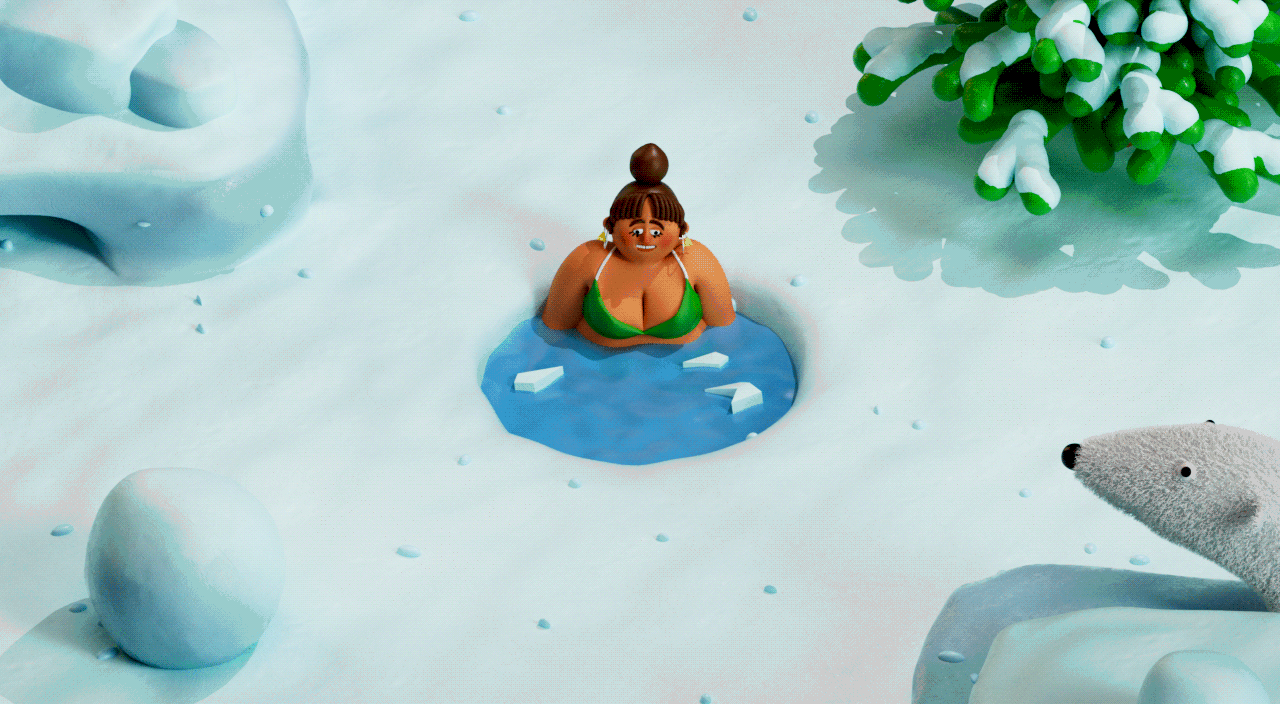Forget hot tubs: Cold plunges are all the rage.
Yes, we’re all willingly dipping ourselves into water that’s below 59 degrees (although most people like to show off their toughness by including lots of ice in their Insta pics). In 2022, the global cold-plunge-tub market was valued at $307.7 million, and this is expected to rise by 4.2 percent annually from 2023 to 2030.
While people have been using cold water as a health remedy since the 18th century or earlier — to cure ailments ranging from fevers to rickets — TikTok, Instagram and celebrity endorsements have really heated up this freezing trend.
The risks
Before even thinking about taking a cold plunge, you should be aware of the risks, and these go beyond being uncomfortable. Cold plunges come with real potential health risks, including hypothermia and heart problems, says the American Heart Association. When you jump into cold water, your body’s response is to constrict your blood vessels and increase your heart rate and blood pressure, and in vulnerable people that elevates your risk of heart failure and stroke, according to the National Center for Cold Water Safety. After about three minutes, your body will start to relax, but at that point, your risk of hypothermia kicks in, as water takes heat away from your body 25 times faster than air does.
Also, if you’re doing a true cold plunge, a.k.a. cryostimulation, then the cold temperature is typically achieved through the use of nitrogen, since it is an element that can exist as a liquid at extremely low temperatures. When liquid nitrogen is pumped into a cryostimulation chamber, it evaporates into a gas that comes into direct contact with you, so your head must remain above the treatment area, says Kelly Johnson-Arbor, M.D., a medical toxicologist and interim executive director of the National Capital Poison Center in Washington, D.C.
“The nitrogen gas in the cryostimulation tank does not contain any oxygen, and asphyxiation can occur if the nitrogen is breathed in,” Johnson-Arbor warns.
In short, please talk with your doctor before taking a cold plunge.
The benefits
What’s been touted as the primary benefit from a cold-water immersion is recovery after a workout, but unfortunately this claim doesn’t have much merit, according to a study published in The Journal of Psychology. The study looked at the effects of cold-water immersion versus active recovery without the cold water and found that there wasn’t a significant difference between the two. But there is some good news. Cold-water shock treatment exposes you to thermal stress, which activates beta-endorphins and noradrenaline in the brain, notes Holly Schiff, a clinical psychologist in Greenwich, Connecticut. Beta-endorphins are feel-good molecules that give us a sense of well-being. Plus, cold water reduces the cortisol hormone, which usually kicks into action when stress and anxiety take over, so going for a cold plunge consistently can improve resilience to stress. In addition, the exposure to cold activates the sympathetic nervous system, which increases the brain’s release of norepinephrine, the adrenal hormone that helps depressed people feel happier naturally.
“During the whole-body cold exposure, the spontaneous release of opioids and cannabinoids in the brain is promoted, which has the potential to create a feeling of well-being, mood control and reduced anxiety,” Schiff explains.
While many people have also anecdotally reported weight loss after repeated soaks in a cold tub, there haven’t been enough studies on this to provide solid evidence, says Tom Ingegno, a doctor of acupuncture and Chinese medicine, and the owner of Charm City Integrative Health in Baltimore. Initial research seems to show that if you take a cold plunge, your metabolism increases briefly to warm up your body, but how much of a lasting weight loss you may see is still questionable. It’s possible, however, that you may appear to be thinner, because the cold plunge reduces inflammation.
How long and how often?
If you do decide to opt for a cold plunge, there isn’t a hard-and-fast rule as to the duration or temperature that’s optimal. But a review of the studies released gives some guidance, notes Joseph Meyerson, a plastic and reconstructive surgeon in Port Townsend, Washington, who often recommends cold immersion to his patients. For the best benefits, he suggests taking a cold plunge for five to 15 minutes at a temperature between 45 and 60 degrees. An easy alternative: “Cold showers, versus cold plunges, are likely equivalent in their ability to gain the health benefits of cold immersion,” he points out.
Anyone ever enjoy a cold plunge? Let us know in the comments below.

Steph Ramplin
Follow Article Topics: Health









